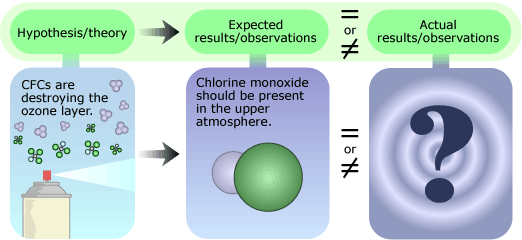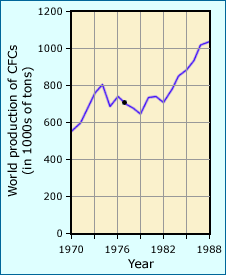With one major hiccup resolved and a better understanding of the atmosphere, Molina and Rowland were ready for the next test of their hypothesis. The object of attention was chlorine monoxide — one of the products of ozone destruction. Since there is no other known source of chlorine monoxide, finding this chemical in the upper atmosphere would strongly support the idea that chlorine is destroying ozone. However, the amount of chlorine monoxide scientists were looking for was miniscule — it would be like trying to detect a single drop of dye in an Olympic-sized swimming pool full of water.


The task was even more challenging because the sensitive instruments necessary to detect the molecules had to be ballooned up into the atmosphere, take measurements quickly, and survive the parachute ride back down to earth. Despite these difficulties, atmospheric scientist James Anderson succeeded in getting the critical evidence. Announced in late 1976, his results showed a ratio of chlorine to chlorine monoxide that was very close to the value expected if the Rowland-Molina hypothesis were accurate.
This evidence was summed up in a report on CFCs requested by the federal government — the dire outcome predicted by the Rowland-Molina hypothesis had attracted more than just scientific interest. Given the growing body of scientific evidence in support of the Rowland-Molina hypothesis, the government felt it was time to act.

On May 11, 1977 the US government announced a timetable for phasing out CFCs in aerosols. Canada, Norway, and Sweden followed suit shortly after. With the aerosol phase-out in place and increased monitoring of the world’s ozone level, things seemed to be moving in the right direction. But that momentum soon dissipated and failed to inspire further policy changes. In fact, the world production of CFCs dipped only slightly before beginning to grow rapidly again in the early 1980s. Molina and Rowland advocated a total ban on CFC production from all sources (not just aerosols), but policymakers were not responding. Despite stalls in environmental action, the two continued their efforts to fully understand ozone depletion, motivated by both scientific interest and a desire to prevent a potential environmental disaster. In the meantime, a key piece of evidence was revealing itself in an unlikely place …
